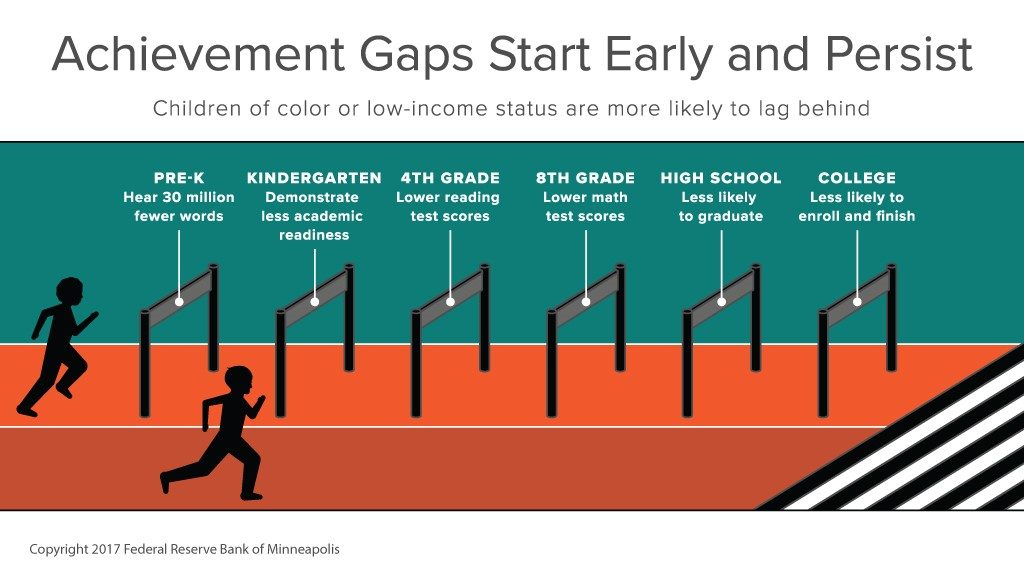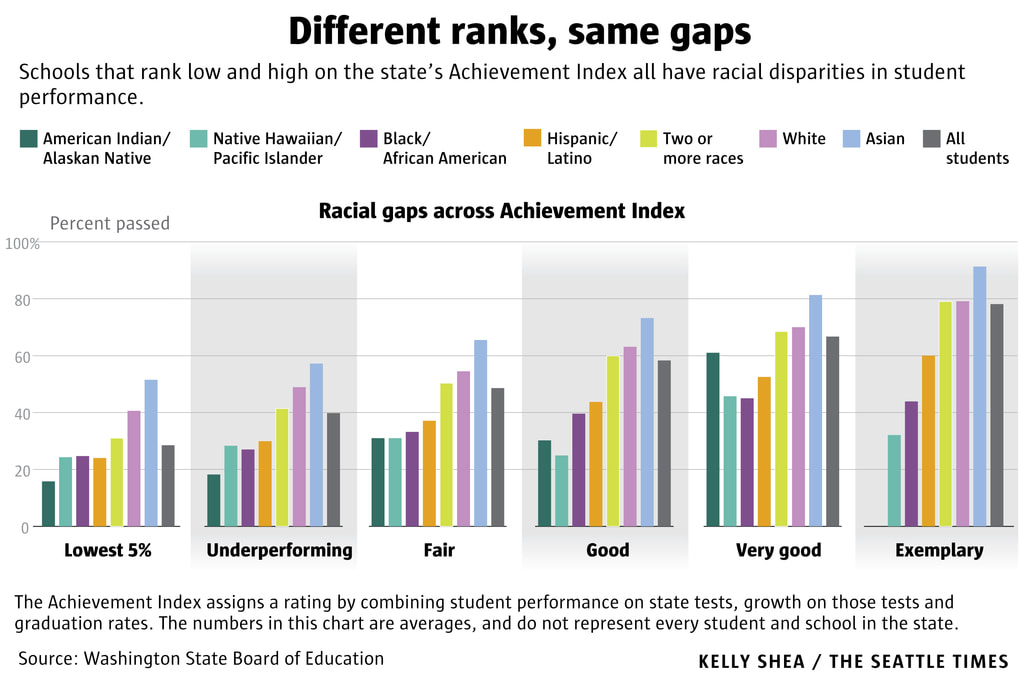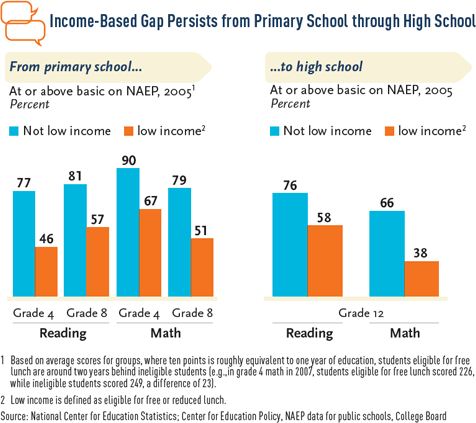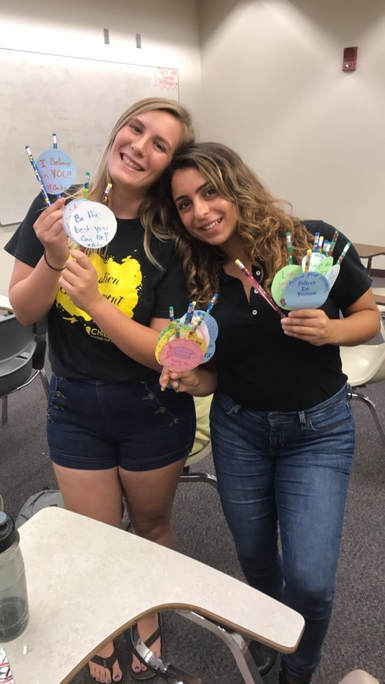|
By Samantha Knight There are times when quitting is simply not an option.
This is coming from someone who is a serial quitter. There are countless unfinished novels stored on my flashdrive; I regularly start cleaning my house and then stop halfway through, distracted by some lost item uncovered while sweeping under the couch. The dozen clubs I’ve joined (then promptly resigned from) may also be worth mentioning. This, however, was different. I was six months out of college when I was hired to teach 8th grade English at a middle school near my hometown. I knew it wouldn’t be easy--I was told by fresh and veteran teachers alike that the first year is the most difficult. In the interview, I was told that this was no exception--in fact, this might be especially difficult. These were good kids, I was told, but they were given a terrible lot. Three months into the school year, and already two to three teachers had been unable to stay. Various subs passed through the classroom as well. The students had no structure, and had gotten used to anarchy in the classroom. They were the only consistent ones in there. They were like foster children that were continuously passed from teacher to teacher. To cope with the constant abandonment, they decided they owned the class. It was the teachers who walked into their territory. While teaching, there were moments that I, too, thought I might quit like those before me. I brought with me rules; many resisted. In hindsight, I understand that they didn’t really believe I would stay, that I was temporary like the rest. This, combined with the fact that, at twenty-three years old and five foot nothing (I could have passed for one of their peers at a distance), led to a general lack of respect among the wilder ones. Sometimes I came home crying and ready to call my principal, saying I couldn’t control the class like I wanted, students didn’t want to listen, I just couldn’t do this anymore. I didn’t call. I knew that if I quit now, the next teacher would have no hope. And neither would the students. I stuck it out. Deep down, these kids wanted structure. They wanted someone to be consistent, no matter how rocky the classroom became, no matter how new or young the teacher was. I received a note on the last day of class from one of my most “problem” students. It read: Thank you for staying when no one else would. Thank you for being my teacher. I’m extremely glad I did stay. And now, in August, I will be entering my second year, new tools in my belt and skills I’ve picked up. The struggle of the first year has made me a more patient, confident, and empathetic person...and, I believe, a much better teacher. To anyone who is entering their first year teaching, or wants to be a teacher, know this: what they say is true. It’s not easy. Not in the slightest. But, believe me, it is worth it in the end, and it will become easier. Even if you feel you are trying your best to no avail, I promise that your presence is far better than your absence. Keep going. Don’t quit.
0 Comments
By Teagan Murphy Education is a bedrock for cultivating success. At Children Beyond Our Borders, Inc. we run by the motto “Education = Empowerment” because we recognize the importance of education in empowering students and communities and in cultivating success. While a degree does not define you, receiving an education often brings you closer to achieving your goals, reaching your dreams, and understanding the world around you. We commonly agree in the United States that education is key to maintaining economic well-being and unlocking upward mobility. However, we often fail to acknowledge and effectively close the educational achievement gap that exists between students of different socioeconomic statuses: a gap that leaves poor and/or nonwhite children behind. Countless studies and research articles show discrepancies between white students and nonwhite students in regard to reading and math proficiency, high school graduation rates, and college enrollment. We also find similar discrepancies between poor and nonpoor students. It is easy to trace the roots of the gap back to a history of inequality in the United States that kept nonwhite, especially Black, children in poor communities and either out of formal education or in separate, low-quality institutions. However, there are several issues today that keep the achievement gap in place, even if separation and discrimination are no longer legally enforced. Modern day segregation in schools is one of these issues. Despite the number of years that have passed since the end of formal segregation, there is still minority concentration in schools, with some schools hosting a majority of white students and other schools hosting a majority of black or overall minority students. This is largely a result of continued residential segregation and persistent concentrated poverty in predominantly black, Hispanic, and Native American communities. School zones often keep students within these communities, maintaining the separation between low-income minority students and higher-income white students. Going further, poorer schools and schools that host primarily minority students often receive less funding (contradictory to what you might expect) and employ less-competent staff members, which can prevent the school from providing more adequate instruction and engaging opportunities. This brings out average lower scores for standardized tests and lower graduation rates for these schools. Other factors in these segregated communities also contribute to the achievement gap. A sense of social support and belongingness within the school community is a primary factor. When students feel supported by their communities – their teachers, faculty members, parents, peers, and other community members – they are more likely to perform better in school. Low-income students report feelings of lower social support and belongingness, and these students are more likely to perform poorly and even drop out. Low-income communities overall also have a different culture and climate than higher-income communities. Parents are less likely to be involved because they are more likely to work more hours or work jobs with fewer opportunities for time off, and a lack of parent involvement translates to a lack of social support. Low-income communities are also more likely to have higher rates of crime, and a lack of security and safety in a community contributes to low school performance. A lack of access to mental health resources within a community can also contribute to the achievement gap. Research indicates that a significant proportion of children face emotional disorders, that children from disadvantaged backgrounds are more vulnerable to emotional difficulties, and that these emotional difficulties are capable of hindering educational achievement. Outside of income status and community resources, the presence of hidden bias in a community can also contribute to the achievement gap for students of color. Along with a gap in achievement, research indicates a gap in discipline, with students of color receiving disproportionately high rates of discipline (detentions, suspensions, expulsions) compared to white students. Constant discipline can not only cause a student to fall behind, bringing down grades and test results and potentially putting them off track to graduate – but it can also cause a decline in motivation, which can stifle improvement and worsen one’s work ethic. Rather than resulting merely from these students exhibiting more problematic behaviors as a result of their communities, it is quite possible that hidden bias causes these students to be punished more quickly and more often than white students despite the offense. Even when controlling for different factors, such as the income status of the students or the offense committed, research shows that minority students are punished more often and more severely than white students. Further research also indicates teachers are more likely to monitor the behaviors of black students compared to other students, and label similar behaviors as delinquency among their black students. When students come to expect discipline as a daily occurrence, they are less likely to feel a sense of social support from their school communities. When teachers have low expectations for students, the students are less likely to perform well, creating a self-fulfilling prophecy. This logic can be extended: when communities have low expectations for their youth, the youth will follow suit, creating another self-fulfilling prophecy. This goes for youth in struggling communities and youth who face bias and discrimination in more well-off communities. However, the self-fulfilling prophecy can be applied positively. When students receive social support and are held to higher expectations, they are more likely to perform well in school. As mentioned at the beginning of this post, we at CBOB believe that Education = Empowerment. It is our stance that every child, regardless of social status, race, or gender, deserves a proper education. We recognize the barriers that young children within our own country face in succeeding in the classroom, which led to the launch of our domestic program, Children Within Our Borders, in 2015. We also recognize the barriers that low-income and nonwhite students face in reaching for higher education as a result of the achievement gap. That is why, in spring of 2018, we launched our College Prep Mentoring Program. Through this program, we aim to bridge the educational achievement and college success gaps between students of varying socioeconomic statuses by providing low-income and traditionally underrepresented students with college prep mentors who guide them through the college application process. We hope to not only bring further awareness to the issue, but also join a force of upcoming initiatives aimed at narrowing an ultimately closing the educational achievement gap. Teagan Murphy is a rising senior at the University of Florida. She is double majoring in Family, Youth & Community Sciences and Sociology. She is CBOB's Mentorship Director.
 By Yanelis Diaz At the end of my sophomore year of college I applied for a position on Children Beyond Our Borders’ UCF Chapter executive board which became my first leadership experience as an undergraduate student. Now after serving countless leadership positions including a two year presidency, I have developed skills that I would’ve never thought possible with my undergraduate career. From having a greater sense of varying team dynamics to tricks to cultivating the attention of a crowd, leadership positions have been my favorite part of my collegiate career. Holding a leadership position as an undergraduate student is an invaluable experience because you have the opportunity to develop skills alongside peers that are striving to do the same. Further, you have the opportunity to practice different communication and teamwork methods to learn your own leadership style. With each position I find myself feeling more confident when initiating a new idea; this confidence has led to the ability to productively network with others. Not only does leadership experience help sharpen skills, but it shows future employers that you have already taken strides towards been an active member in a team which is its own form of workforce experience. Empowering others while empowering yourself stands as a common belief within CBOB so if you’ve been on the brinks of running for an officer position or applying for an internship, I encourage you to take the leap and go for it. Yanelis Diaz is the Operations Director of CBOB and is currently a student at the University of Central Florida.
|
Archives
July 2021
|
|
Follow Us |







 RSS Feed
RSS Feed